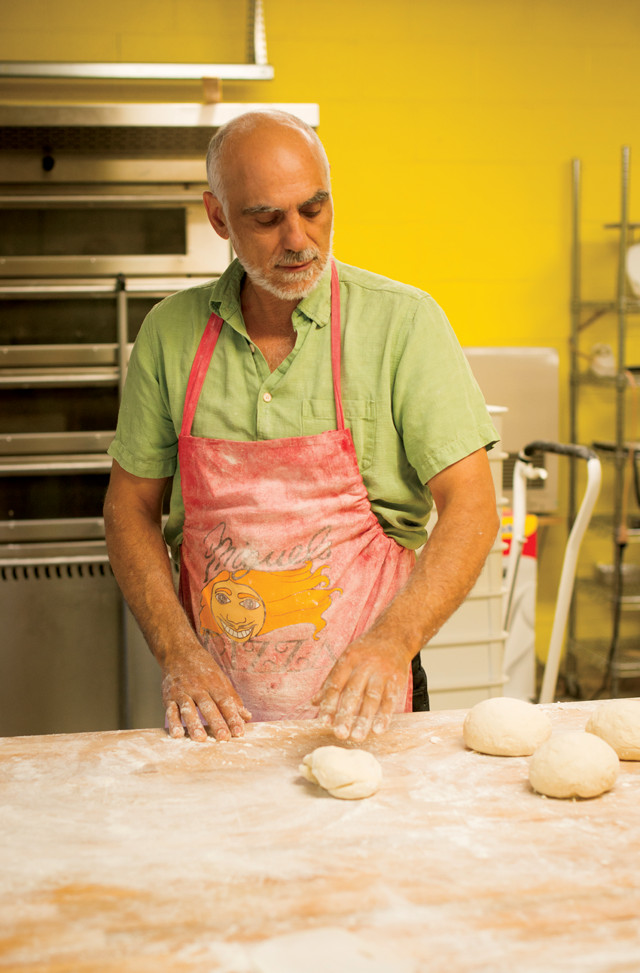
by Lucas Joel Monday, February 1, 2016

Miguel Ventura of Miguel's Pizza, preparing pizza dough. Credit: Alex Mandrila.
Miguel Ventura, owner of Miguel’s Pizza, has been at the Red River Gorge Geological Area (“the Red”) since 1984. He started selling ice cream to tourists, and then started making pizza, which he prepares from scratch in his garage near the main store.
“We were just hanging out [back in 1984], and then the climbers started showing up,” Miguel says. “Some guys from the U.K. decided to open a climbing shop at our ice cream store, and they taught me a little bit about how to climb and how to sell the gear, and that’s how it started,” he says. “At first it was just ‘trad climbers,’ but then Porter Jarrard came around 1991 and developed sport climbing across the gorge.”
“Trad climbing,” short for traditional climbing, involves climbers using pieces of gear they carry with them — such as wedges of metal attached to metal wire — which they lodge in cracks in the rock while climbing. They then clip their rope into the installed gear before continuing to climb. If they fall, their gear will, if secure, catch the rope and help stop their fall. Sometimes, if bolts are available on a route, a trad climber may choose to use them, although many trad routes are boltless.
In sport climbing, metal bolts are drilled into a rock wall beforehand, and then a climber clips rope-holding gear into the bolts. If the climber falls, their gear should hold the rope and catch their fall. This typically takes less time than trad climbing because a climber does not have to spend time installing their own gear in the rock.
“At first, in t"e ’90s, there was a lot of conflict between the trad and sport climbers,” Miguel says. “Like threats from trad climbers saying ‘this is our turf’” to sport climbers. The two groups, though, eventually settled their differences, and now sport climbing is the most popular kind of climbing at the Red thanks to well-weathered footholds and handholds on cliff faces, which do not always have the cracks necessary for trad climbing.
Beyond changes in climbing styles, Miguel has also seen climbers themselves change over time. “You used to see lifer climbers, but not so much anymore,” he says. “I’ve seen five or six generations of college kids come through here, and, even though the place has gotten more popular, most of those kids only last about a year or two.”
But, he says, “the gorge is a beautiful place. I’ll always be here, and will die here. I love it.”
© 2008-2021. All rights reserved. Any copying, redistribution or retransmission of any of the contents of this service without the expressed written permission of the American Geosciences Institute is expressly prohibited. Click here for all copyright requests.